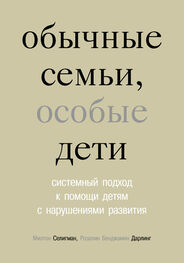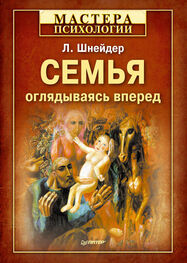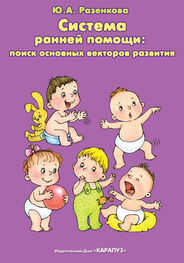Montalvo, B. (1974). Home-school conflict and the Puerto Rican child. Social Casework, 55, 76-83.
Moore, E. K. (1981). Policies affecting the status of black children and families. In H. R McAdoo (Ed.), Black families (pp. 278-290). Beverly Hills: Sage.
Moorman, M. (1992, January/February). My sister's keeper. Family Therapy Networker, 41-47.
Morgan, S. (1987). Abuse and neglect of handicapped children. Boston: College-Hill.
Mori, А. А. (1983). Families of children with special needs: Early intervention. Rockville, MD: Aspen.
Morris, M. M. (1987, July). Health care: Who pays the bills? Exceptional Parent, pp. 38-42.
Mott, D. W., Jenkins, V L., Justice, E. E, & Moon, R. M. (n.d.) Project Hope. Family, Infant and Preschool Program, Western Carolina Center, Morganton, NC.
Mullins, J. (1979). A teacher's guide to management of physically handicapped students. Springfield, IL: Thomas.
Murphy, A, Paeschel, S., Duffy, Т., & Brady, E. (1976). Meeting with brothers and sisters of Down's syndrome children. Children Today, 5, 20-23.
Myers, R. (1978). Like normal people. New York: McGraw-Hill.
NCHS studies health insurance and chronically ill children. (1992, October). Nation's Health, p. 13.
Neugarten, B. L. (1976). Adaptation and the life cycle. Counseling Psychologist, 6, 16-20.
Newman, J. (1983). Handicapped persons and their families: Philosophical, historical, and legislative perspectives. In M. Seligman (Ed.), The family with a handicapped child (pp. 3-25). Orlando, FL: Grune & Stratton.
Newman, J. (1991). Handicapped persons and their families: Philosophical, historical, and legislative perspectives. In M. Seligman (Ed.), The family with a handicapped child (2nd ed., pp. 1-26). Boston: Allyn & Bacon.
Newman, M. A. (1983). A continuing evolution: A history of nursing science. In N. L. Chaska (Ed.), Time to speak (pp. 385-393). New York: McGraw-Hill.
Norr, K. L., Block, С R., Charles, A., Meyering, S., & Meyers, E. (1977). Explaining pain and enjoyment in childbirth. Journal of Health and Social Behavior, 18, 260-275.
Offer, D., Ostrov, E., & Howard, K. I. (1984). Body image, self-perception, and chronic illness in adolescence. In R. W. Blum (Ed.), Chronic illness and disabilities in childhood and adolescence (pp. 59-73). Orlando, FL: Grime & Stratton.
Olshansky S. (1962). Chronic sorrow: A response to having a mentally defective child. Social Casework, 43, 190-193.
Olson, D. H., McCubbin, H. I., Barnes, H., Larsen, A, Muxen, M., & Wilson, M. (1984). One thousand families: A national survey. Beverly Hills: Sage.
Olson, D. H., Russell, С S., & Sprenkle, D. H. (1980). Circumplex model of marital and family systems II: Empirical studies and clinical intervention. In J. P.Vincent (Ed.), Advances in family intervention assessment and theory (Vol. 1, pp. 129-179). Greenwich, CT: JAI Press.
Opirhory, G., & Peters, G. A. (1982). Counseling intervention strategies for families with the less than perfect newborn. Personnel and Guidance Journal, 60, 451-455.
Orenstein, A. (1979). Organizational issues in implementing special educational legislation. Paper presented at the annual meeting of the Society for the Study of Social Problems, Boston, MA.
Parke, R. D. (1981). Fathers. Cambridge, MA: Harvard University Press.
Parsons, T. (1951). The social system. NY: Free Press.
Patterson, J. M. (1985). Critical factors affecting family compliance with home treatment for children with cystic fibrosis. Family Relations, 34, 79-89.
Patterson, J. M. (1988). Chronic illness in children and the impact on families. In C. Chilman, E. Nunnally, & E. Cox (Eds.), Chronic illness and disability (pp. 69-107). Beverly Hills: Sage.
Patterson, J. M. (1991). A family systems perspective for working with youth with disability. Pediatrician, 18, 129-141.
Pearlman, L., & Scott, K. A. (1981). Raising the handicapped child. Englewood Cliffs, NJ: Prentice-Hall.
Peck, J. R., & Stephens, W. B. (1960). A study of the relationship between the attitudes and behavior of parents and that of their mentally defective child. American Journal of Mental Deficiency, 64, 839-844.
Pepper, E C. (1976). Teaching the American Indian child in mainstream settings. In R. L.Jones (Ed.), Mainstreaming and the minority child (pp. 108 – 122). Reston, VA: Council for Exceptional Children.
Pieper, E. (1976, April). Grandparents can help. Exceptional Parent, pp. 7-9.
Pinderhughes, E. (1982). Afro-American families and the victim system. In M. McGoldrick, J. K. Pearce, & J. Giordano (Eds.), Ethnicity and family therapy (pp. 133-158). New York: Guilford Press.
Pines, M. (1982). Infant-stim: It's changing the lives of handicapped kids. Psychology Today, 16, 48-53.
Pizzo, P. (1983). Parent to parent: Working together for ourselves and our children. Boston: Beacon.
Powell, J. D. (1975). Theory of coping systems: Changes in supportive health organizations. Cambridge, MA: Schenkman.
Powell, T. H., & Gallagher, P. E. (1993). Brothers and sisters: A special part of exceptional families (2nd ed.). Baltimore: Brookes.
Poznanski, E. (1969). Psychiatric difficulties in siblings of handicapped children. Pediatrics, 8, 232-234.
Prattes, 0. (1973). Section A: Beliefs of the Mexican-American family. In D. Hymovich & M. Barnard (Eds.), Family health care (pp. 128-137). New York: McGraw-Hill.
Price, J. А. (1976). North American Indian families. In С. H. Mindel & R. W Habenstein (Eds.), Ethnic families in America: Patterns and variations (pp. 248-270). New York: Elsevier.
Pruett, K. D. (1987). The nurturing father. New York: Warner.
Quesada, G. M. (1976). Language and communication barriers for health delivery to a minority group. Social Science and Medicine, 10, 323-327.
Quine, L., & Pahl, J. (1986). First diagnosis of severe mental handicap: Characteristics of unsatisfactory encounters between doctors and parents. Social Science and Medicine, 22, 53-62.
Radley, A., & Green, R. (1987). Illness as adjustment: A methodology and conceptual framework. Sociology of Health and Illness, 9, 179-207.
Ragucci, A. T. (1981). Italian Americans. In A. Harwood (Ed.), Ethnicity and medical care (pp. 211-263). Cambridge, MA: Harvard University Press.
Raimbault, G. Gachin, Q, Limal, J. M., Eliacheff, C.,& Rappaport, R. (1975).
Aspects of communication between patients and doctors: An analysis of the discourse in medical interviews. Pediatrics, 55, 401-405.
Ramsey, G. N., (Ed.). (1989). Family systems in medicine. New York: Guilford Press.
Reader's forum. (October, 1985). Exceptional Parent, p. 7.
Related Services and the Supreme Court: A family's story. (1984, October). Exceptional Parent, pp. 36-41.
Resnick, M. D. (1984). The social construction of disability. In R. W. Blum (Ed.), Chronic illness and disabilities in childhood and adolescence (pp. 29-46).
Orlando, FL: Grune & Stratton.
Resnick, M. D., Reiss, K., Eyler, F D., & Schauble, P. (1988). Children's developmental services: A multidisciplinary program of psychological and educational services for neonatal intensive care. Journal of Counseling and Development, 66, 279-282.
Reynolds, Т., & Zellmer, D. D. (1985). Group for siblings of preschool age children with handicaps. Sibling Information Network Newsletter, 4, 2.
Rhoades, E. A. (1975). A grandparents' workshop. Volta Review, 77, 557-560.
Читать дальше



